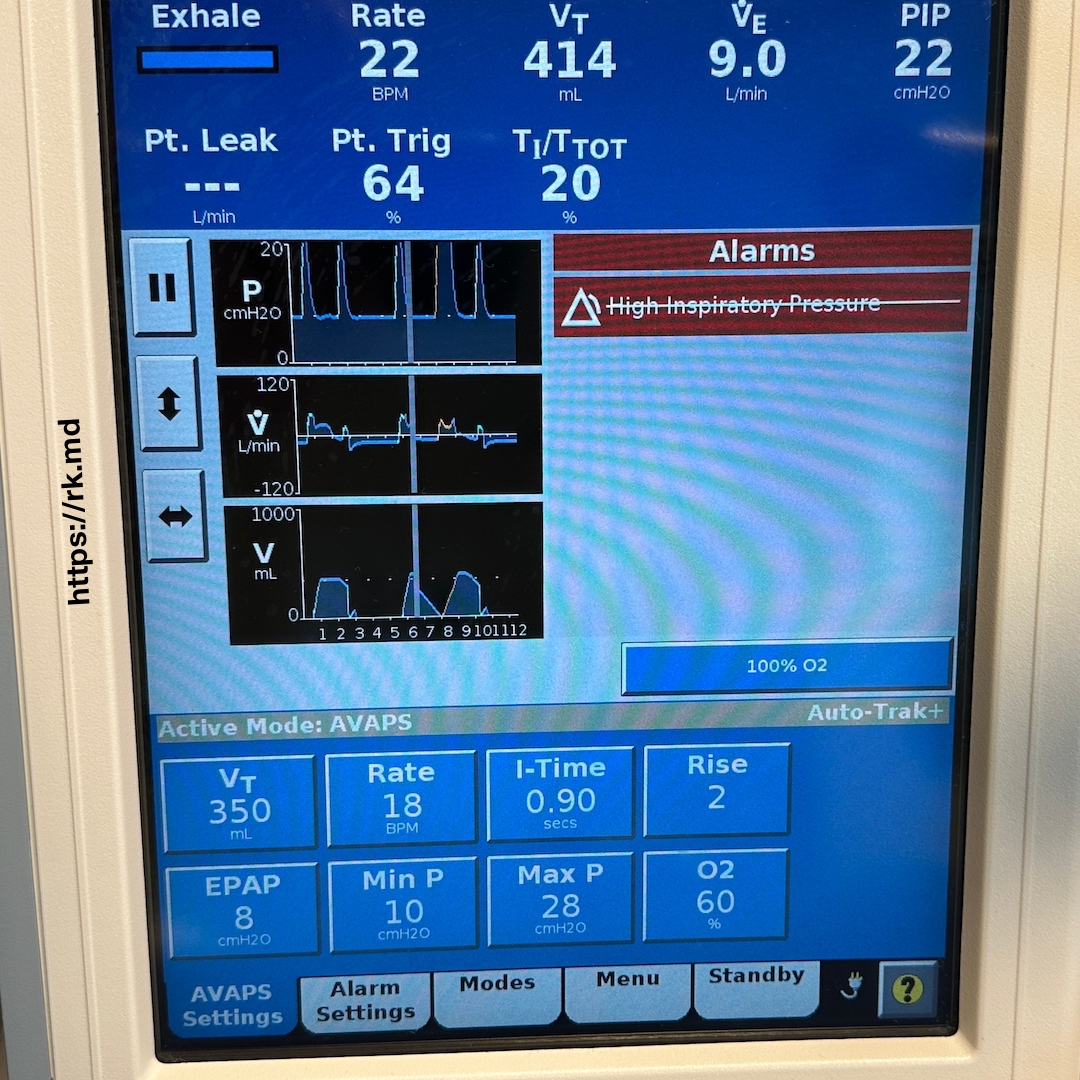In a conventional spontaneous/timed (S/T) mode, one directly sets an inspiratory positive airway pressure (IPAP) and expiratory positive airway pressure (EPAP) to address issues with ventilation and oxygenation, respectively. Remember, pressure support = IPAP – EPAP. In contrast, average volume assured pressure support (AVAPS) is a mode with variable pressure support used to achieve a goal tidal volume.
With AVAPS, an EPAP is set just like before, but instead of a fixed IPAP, one sets a minimum (min P) and maximum (max P) inspiratory pressure. The IPAP can change within the range of min P and max P. Because IPAP can change to deliver the targeted tidal volume (VT), the pressure support changes.
AVAPS is often compared to mechanical ventilation modes like VC+; however, unlike VC+, the adjustments to the IPAP with AVAPS are much slower (~2.5 cm H2O/minute at most) to achieve the average tidal volume over one minute. For this reason, AVAPS isn’t a great option when rapid IPAP adjustments are anticipated (e.g., acute respiratory failure).
For the Philips Respironics V60 (pictured), a startup algorithm determines the initial IPAP by calculating the highest value: min P, VT/60 + EPAP, or EPAP + 8.
So when do I use AVAPS? It’s great for patients with chronic neuromuscular disorders, obesity-hypoventilation syndrome, and obstructive sleep apnea to help augment spontaneous tidal volumes (not their rates!)
Overall, AVAPS uses a dual-control system to adjust the pressure and volume settings automatically, ensuring that the patient receives the required ventilation while minimizing the risk of hypoventilation or hyperventilation. AVAPS has several benefits over other ventilation modes, including improved patient comfort, reduced risk of hypoventilation or hyperventilation, and improved patient compliance.
Drop me a comment with your experience using AVAPS!






